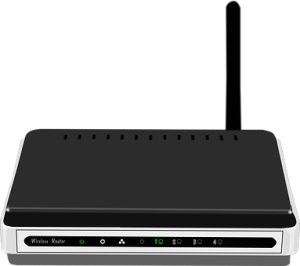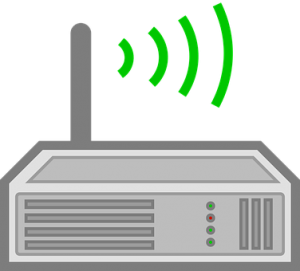Asus Router Login
In the vast world of internet connectivity, routers play a pivotal role as gatekeepers of our online experiences. Among the various brands available, ASUS stands out, known for its robust performance and user-friendly interface. If you’re a new ASUS router owner or simply looking to better understand your device, this blog post promises to be a valuable guide. From diving into the intricacies of how to log in to Asus router to the nuances of configuring its settings, we’ve got you covered.
Logging into your ASUS router is the first and fundamental step to accessing its vast array of features and settings. While it’s often a straightforward process, there are moments when one might face hiccups. Understanding the standard login procedure ensures you’re equipped to navigate and personalize your router settings effectively.
 Beyond just logging in, the real power of a router is harnessed when you delve into its configuration. Tailoring the ASUS router settings allows you to optimize its performance, ensure security, and make the most of your internet connectivity. Whether you’re looking to set bandwidth limits, enable parental controls, or secure your network, the configuration is key.
Beyond just logging in, the real power of a router is harnessed when you delve into its configuration. Tailoring the ASUS router settings allows you to optimize its performance, ensure security, and make the most of your internet connectivity. Whether you’re looking to set bandwidth limits, enable parental controls, or secure your network, the configuration is key.
However, technology, being the complex domain it is, can sometimes present challenges. Common Asus router login issues, though rare, can still surface. But fret not! We’re also going to dive deep into troubleshooting these glitches, ensuring smooth sailing for you.
So, if you’re keen on mastering your ASUS router experience from Login to configuration and addressing any potential issues, stay with us. Equip yourself with knowledge, and ensure that your online adventures are both powerful and seamless.
How to Login to ASUS Router:
Navigating the world of router setups can seem daunting, but with the right steps, logging into your ASUS router can be a breeze. Here’s a simple guide to help you access the router’s interface using the Asus default router login credentials:
- Connect to Your Network: Before you begin, ensure that your device is connected to the ASUS router, either via an Ethernet cable or through a wireless connection.
- Open a Web Browser: Launch your preferred web browser. This could be Chrome, Firefox, Safari, or any other browser of your choice.

- Access the Router Login Page: In the browser’s address bar, type in the default access address, typically “192.168.1.1” or “192.168.0.1”, and press Enter. This should lead you to the ASUS router’s login page.
- Enter Default Credentials: Once on the login page, you’ll be asked to enter a username and password. For most ASUS routers, the default Asus router login credentials are:
- Username: admin
- Password: admin
It’s worth noting that these are the standard default password for Asus router. If you or someone else has previously changed them, you’ll need to enter the updated ones.
- Successful Login: After entering the default password for Asus router, click on the “Login” or “Sign In” button. If entered correctly, you’ll be granted access to the ASUS router’s dashboard.
- Change Default Asus Router login Credentials: For security reasons, it’s highly recommended to change the default Asus Router login details after your first successful Login. This protects your router settings and network from unauthorized access.
With these steps, you should be able to easily access the ASUS router interface using the Asus default router login. Remember, regularly updating your router’s firmware and keeping a strong, unique password is critical for maintaining a secure and efficient network.
How to Fix ASUS Router Login Issues:
It’s not uncommon for users to face hurdles when attempting to log in to ASUS router. Whether it’s a forgotten password or connectivity issues, the following guide will assist you in troubleshooting and resolving these hiccups:
- Incorrect Password or Username: One of the most common issues users face when trying to log in to ASUS router is entering the wrong credentials. If you haven’t changed the default credentials, the username is often “admin,” and the ASUS router default password is “admin” as well. If you’ve changed the password and can’t recall it, you might need to reset the router to its factory settings.

- Browser or Cache Issues: Sometimes, the problem isn’t with the router but with the browser itself. Clearing the browser’s cache or trying a different browser can help. If you’re still unable to log in to ASUS router, it might be a deeper technical issue.
- Connection Issues: Ensure that your device is properly connected to the ASUS router, either via a wired Ethernet connection or through Wi-Fi.
- Router Reset: If you can’t remember the changed login details and can’t access the router’s interface, you might need to reset the router. This will revert the settings to default, including the ASUS router default password. Remember, resetting the router will erase all personalized configurations, so use this as a last resort.
- Firmware Updates: Outdated firmware can sometimes cause login issues. If you can access the router’s dashboard from another device, check for firmware updates and install if available.
- Physical Inspection: Ensure that the router is powered on and all connection cables are securely attached. Sometimes, a simple power cycle can solve many connectivity and login issues.
By following the above steps, you should be able to address and fix common issues when trying to log in to ASUS router. Always document the changes you make. Remember, regular maintenance and updates are crucial for smooth router operation.
How to Configure ASUS Router Settings:
Once you’ve logged into your ASUS router, personalizing and optimizing its features to suit your needs is essential. The Asus router settings offer a plethora of options, ensuring that users get the best connectivity experience. Here’s how you can delve into the configuration:
- Access the Configuration Dashboard: After logging in, you’ll land on the main dashboard of the router’s interface. On this page, look for a tab or link titled “Settings” or “Configuration.” Clicking on this will direct you to the Asus router configuration page.
- Wireless Settings: Navigate to the “Wireless” section on the Asus router configuration page. Here, you can:
- Set your network name (SSID).
- Choose the best wireless channel for reduced interference.
- Set up encryption (WPA3 is the latest and most secure).
- Adjust other advanced wireless options.
- LAN and WAN Settings: Under the LAN settings on the Asus router configuration page, you can modify the internal network settings of your router. Meanwhile, WAN settings allow you to configure your router’s connection to the internet provider.
- Quality of Service (QoS): QoS settings in the Asus router settings let you prioritize bandwidth for specific devices or services. This is useful if you want to ensure smooth streaming or gaming experiences.
- Parental Controls: ASUS routers provide robust parental control options. In the Asus router settings, you can limit access to certain websites, set online time limits, and even monitor usage.
- Advanced Settings: Dive deeper into the Asus router configuration page to adjust settings like port forwarding, VPN, firewall settings, and more.
- Save & Reboot: After making all desired changes in the Asus router settings, always remember to save. In some cases, the router may require a reboot for changes to take effect.
With these steps, configuring your ASUS router becomes straightforward. Regularly reviewing and updating your Asus router settings ensures optimal performance and a secure network environment. Always ensure you document any changes you make for future reference.
Conclusion:
 Navigating the world of router setups and configurations can sometimes seem like a daunting task. However, understanding the key aspects of the ASUS router login process simplifies the journey considerably. A seamless login process ensures that users can efficiently manage, configure, and troubleshoot their networks, making the overall online experience smooth and hassle-free.
Navigating the world of router setups and configurations can sometimes seem like a daunting task. However, understanding the key aspects of the ASUS router login process simplifies the journey considerably. A seamless login process ensures that users can efficiently manage, configure, and troubleshoot their networks, making the overall online experience smooth and hassle-free.
To successfully Login to ASUS router, users typically need the router’s IP address and the correct login credentials. Whether you’re using the default settings or have personalized your access details, it’s vital to store this information securely. This is not just about gaining access but also ensuring that your network remains secure from unauthorized access.
Moreover, periodic checks and updates to your router’s firmware can further enhance the Login to ASUS router experience. Such updates often come with improvements to the user interface, security enhancements, and fixes to any existing issues. Staying updated ensures a safer and more streamlined login process.
In essence, the ASUS router login process serves as the gateway to a world of possibilities. It’s the first step in setting up a secure network, managing connected devices, setting parental controls, and so much more. So, while it might seem like a simple step, understanding and mastering the login process is fundamental to leveraging the full range of features that ASUS routers offer.
Always keep your login details handy, stay updated, and remember that a secure login is the foundation of a robust and reliable home or office network. If you need to resolve any other Asus router issue, you can visit our Asus Support page.
